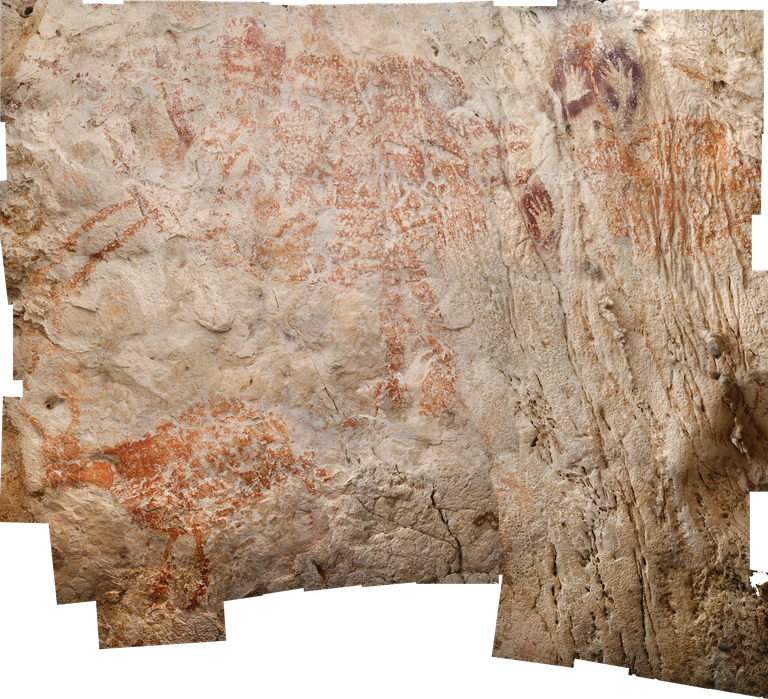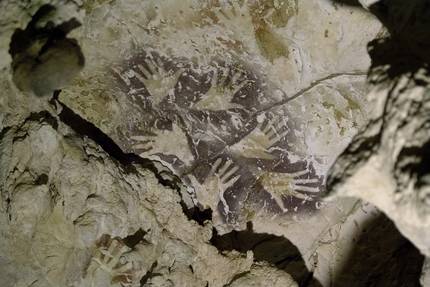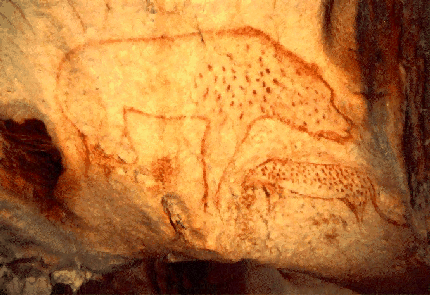Text written in Basque and translated automatically by Elia without any subsequent editing. SEE ORIGINAL
The creation of paleolithic art, object of consultation
A group of researchers have shown that some of the drawings found in a cave in Borneo are between 40 and 52,000 years old. This has raised questions about the creation of Palaeolithic art, considered to be the oldest art of European caves (the oldest estimate to have a maximum age of 40,000 years). Where and when did rock art first arise? Diego Garate Maidagan, an archaeologist specializing in rock art, has reflected on this from the existing data to date.

The oldest known figurative drawing is a reddish bovine found in the cave of Lubang Jeriji Saléh (Borneo), according to archaeologist Maxime Aubert and his team. In the journal Nature it has been stated that they painted the bobino at least 40,000 years ago and that it is on a panel with many negative hands, they have even shown that they are older. In addition, three other nearby caves have found more examples of Palaeolithic rock art and their data have been used to refine the chronology and evolution of this type of art.
Taking into account the published results, the research is “outstanding” according to rock art expert Diego Garate Maidagan: “I would highlight two aspects: the dating itself and the question it has asked about the genesis of this type of art.”
In fact, Garate recalled that in Indonesia, before Borneo, paleolithic paintings have also been found in Timor and Silawesi: "They are not as old as the current ones. Those of Timor are more recent, but in any case those of the Upper Palaeolithic; and those of Silawesi, an animal like wild boar, are 35,400 years ago. These from Borneo are between 40 and 52,000 years old. The truth is that there are three islands that in total have more than a dozen caves with dating, and all are from the Upper Palaeolithic and their art is very homogeneous".
He says that although in many of the titles it has been said that they have found the oldest figurative art, "that cannot be seen, in the center of Europe, in Germany, because there are ivory sculptures of 42,000 years; we do not know with certainty what is the oldest. But that doesn't matter, for us the consequences are the most important; our goal is to know better the origin of art and the aspects related to it."

Negatives of purple hands on other ochres. Between them there are 20,000 years. Ed. Related information
Thus, research has shown that there are two spaces with the art of the Upper Palaeolithic, one in Oceania and one in Europe. And the images that appear --negative of the hands, animals- are quite similar in one and the other. According to Garate, there is no doubt that there is a relationship between the two, "because if it is not very difficult to explain why they have the same appearance".
In Indonesia and Europe different animals appear, since the species that lived in each place were different, but the shapes of the silhouettes, the perspective, the way to express the details of their interior (hairs, for example), the way to adapt to the walls of the caves, the technique used, etc. have a huge similarity and the negatives of the hands are equal. "If we took Borneo's bino and placed it between the drawings of Danbolinzulo (Zestoa) or another cave here, we would hardly notice it," Garate jokingly adds.
Hypotheses and statements
There are two hypotheses that explain that the characteristics of art in both places are so similar: at the same time, in both places and in each of them, they developed the same type of art, or both have the same origin and from there they come.
Garate bets on the second hypothesis: "I think the most sensible thing is to think that this type of art developed in a place between two places, and that those who did it, migrating, carried their art in one way or another. The key is to find that place, but it can be in Africa or the Middle East. The question is to find it, because there are still many places to investigate."
The other hypothesis is considered much more unlikely: "This is very difficult and we have no evidence to think it was so. In any case, the hypothesis is there, because we cannot discard it until we find evidence in favor of the other."
Therefore, he has remarked that, on the one hand, the oldest figurative art known so far is in two areas almost antipodes, so that that of Europe is not the only, nor the oldest, and, on the other hand, is related to the Homo sapiens, species to which this species arrives, and not before.
Accompanying point dates
There is no doubt that to complete the story it is imperative that the dating be reliable, and that is the other aspect that Garate has highlighted from the research led by Aubert: "The uranium/thorium decay technique has been used, but the sampling procedure is much more scientific than usual."
He explains that laser ablation has been used for sampling. "Thanks to this, they acquire thin sheets and through stratigraphy they see all the layers: calcite under the paint, layer of paint and calcite on it. Then they know how the calcite has developed, when the painting has been done and how it has happened if calcita has been recreated on it." In addition, they study the composition of calcite, so that the calculation algorithms are also more complete than usual.
However: with laser ablation, samples have an approximate measurement of a coin, and in European deposits conservation is the priority, so this method is not used for sampling. Instead, scratching with a scalpel, they take a small sample to destroy the paint as little as possible. This is because stratigraphy is not done or calcite is analyzed, so the results are clearly less accurate. "The reliability of the dating is low compared to the procedure used in Indonesia," explains Garate.
This does not mean that European datations have no value: "Due to the numerous dating that have been done in the European caves, we have a lot of data. Thus, despite the results of the edges, the majority that converges gives us some certainty. For example, in Chauvet (France) about two hundred datations have been made and 5% are rare. The rest are coherent and have been done in different laboratories. Therefore, they can be considered quite safe."
Buletina
Bidali zure helbide elektronikoa eta jaso asteroko buletina zure sarrera-ontzian












